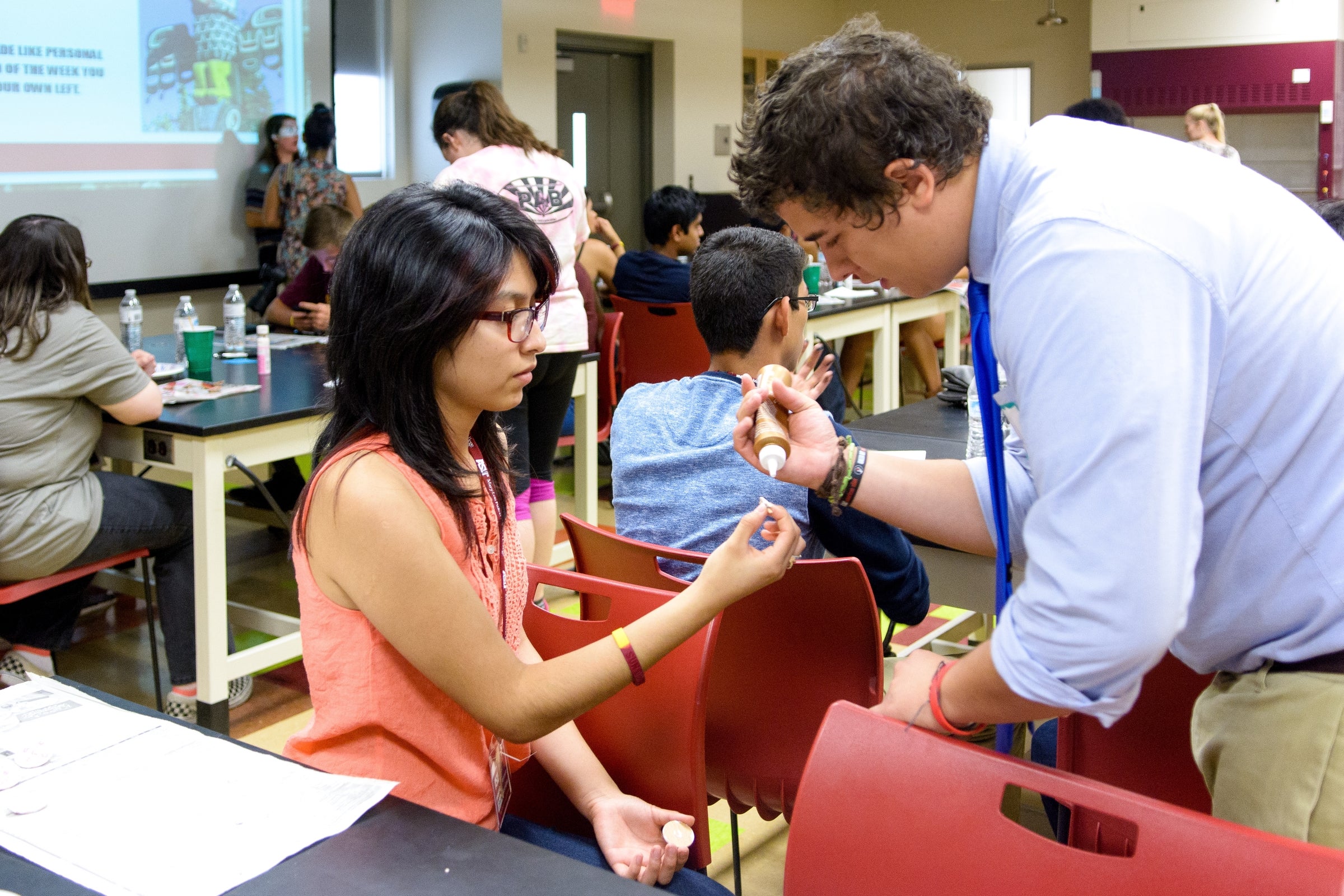Teenagers attending the Hunnicutt Future Educators Academy at Arizona State University this week are learning to think like engineers so that someday they can teach that way.
The camp, for high school students who have an interest in teaching, focuses on science, technology, engineering and math and is sponsored by the Mary Lou Fulton Teachers College. The teens live on the ASU Polytechnic Campus for a week as they work on projects together. Hunnicutt will hold another session next week at ASU’s West campus.
“In schools we want STEM in all of our subjects because it makes us critical thinkers,” Hilary Goodine, one of the student teachers, told the campers as they worked on a project. She graduated from the Mary Lou Fulton Teachers College in May with a degree in elementary education and begin teaching at the Eduprize School in Queen Creek this fall.
The camp is designed to show how hands-on activities are crucial for STEM learning, said Daniel Cortez, who will be a senior education major and was one of the student teachers at the camp.
During the week, the campers used index cards and tape to design desk-top “skyscrapers” and later in the week will create machines to pop balloons in a Rube Goldberg competition.
Suny Mendez, a camper at the Hunnicutt Future Educators Academy at ASU’s Polytechnic Campus, gets help from Daniel Cortez, a student teacher at the camp and a senior in the Mary Lou Fulton Teachers College. Photo by Alisha Gudz/ASU
“All of the activities are designed to follow the engineering design process and all the steps,” Cortez said.
“And that’s what a lot of being a teacher is — helping other people solve problems, and using whatever resources you have.”
Just being on the campus is helpful for the teens, many of whom would be the first in their family to attend college. Connie Pangrazi, the assistant dean of academics at the Mary Lou Fulton Teachers College, said research shows that students who visit campus are more likely to enroll in college
“We give them an opportunity to be here overnight, and we expose them to college life and they say ‘Wow, I can picture myself here.’ ”
The Hunnicutt Future Educators Academy is one way the college is inspiring future teachers at a critical time — 26 percent of public school teachers in Arizona will be eligible to retire by 2018, according to the state Department of Education.
This year’s campers got a nice bonus after they applied. Thanks to a grant from the College Football Playoff Foundation, all fees were waived and the week was free.
Josh Rios of Mesa just graduated from Desert Vista High School and hopes to attend the Mary Lou Fulton Teachers College after taking classes at Chandler-Gilbert Community College.
“I’ve thought about being a teacher for the last year, and I wanted to see what this was like,” he said.
“I wanted to see the college atmosphere too. The beds could be more comfortable, but it’s really fun.”
Top photo: Brandon Correa works on a project at the Hunnicutt Future Educators Academy at the Polytechnic campus of Arizona State University. Photo by Alisha Gudz/ASU
More Science and technology

Podcast explores the future in a rapidly evolving world
What will it mean to be human in the future? Who owns data and who owns us? Can machines think?These are some of the questions pondered on a newly launched podcast titled “Modem Futura.” Co-…

New NIH-funded program will train ASU students for the future of AI-powered medicine
The medical sector is increasingly exploring the use of artificial intelligence, or AI, to make health care more affordable and to improve patient outcomes, but new programs are needed to train…

Cosmic clues: Metal-poor regions unveil potential method for galaxy growth
For decades, astronomers have analyzed data from space and ground telescopes to learn more about galaxies in the universe. Understanding how galaxies behave in metal-poor regions could play a crucial…

